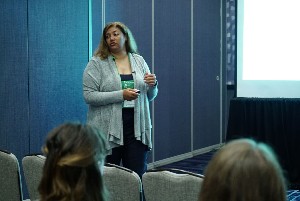
According to a recent five-year study by the RP Group, “nearly 300,000 California community college students who completed all or most of their transfer requirements did not make it ‘through the gate’ to a university.”
Dr. Darla Cooper, Executive Director of the RP Group (and plenary speaker at last year's Tech and Transfer Conference), discussed this phenomenon during her session "Mapping the Transfer Landscape for Community College Students" at AACRAO’s Technology & Transfer Conference in Minneapolis. She specifically referenced the Through the Gate transfer study, which focused on a sample of 875,630 students, including students “near” and “at” the gate, and transfer achievers who proceeded to attend a university.
Is the Gate Open or Closed?
Through the Gate has been broken down into two phases: "Mapping the Transfer Landscape" and "Getting Better Directions." Phase one, "Mapping the Transfer Landscape," involved quantitative research to better understand the following:
-
How many students in California arrived at or near the transfer gate, but did not go through?
- Who are these students and where do they reside?
- What we can glean about opportunities to increase their transfer success?
This phase focused on identifying strategies for increasing transfer, increasing baccalaureate production, and enhancing socioeconomic mobility, particularly for underrepresented populations. Dr. Cooper emphasized that transfer students are not a monolith; in fact, the study sample included three distinct groups:
Students Near the Gate: These students (nearly 157,000) have not completed their requirements, and of this cohort, nearly half exited the system without a credential. If they did not transfer within one year of completing their requirements, they were less likely to move on to a university.
Students at the Gate: These are students (nearly 136,000) who met the requirements for transfer, but did not move forward. The study found that these students were more likely to be Latino (regardless of gender).
Transfer Achievers: Two-thirds of the sample achieved transfer, however, the majority of the students did so without a degree or certificate.
Next Steps
The ongoing second phase, "Getting Better Directions," involves talking with students who are ready or nearly prepared to transfer in order to understand what factors are impacting their journey. Research questions include:
(1) Why do so many students stop short of transferring?
(2) What can we do to help students who are at or near the gate?
(3) What is holding back different student groups?
Dr. Cooper encouraged participants to break into small groups to discuss barriers, challenges, similarities, and differences between varying institution types. She concluded by asking the audience to consider what they are doing to make sure students get to the finish line and emphasized that we need to do more.